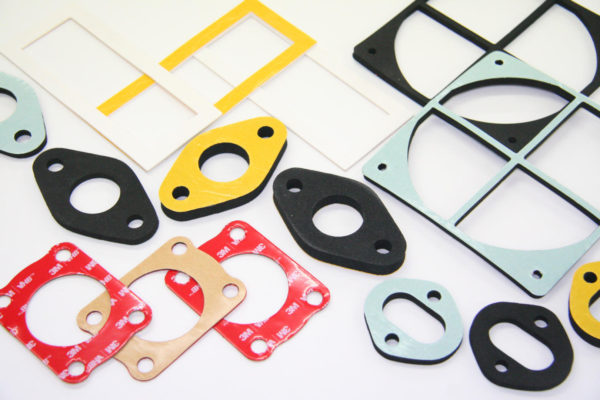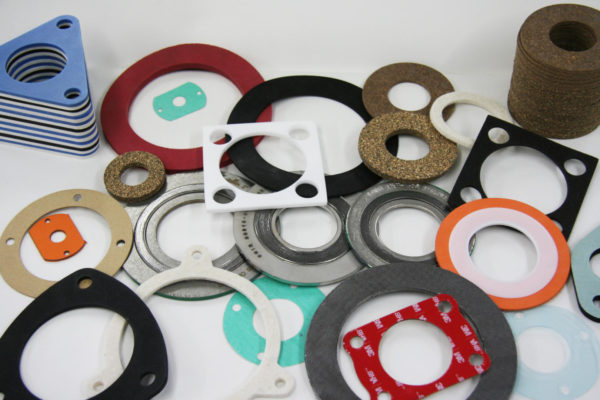Check Valves: Ensuring Flow in One Direction
Industrial Seals: Ensuring Precision and Reliability
Check Valves: Ensuring Flow in One Direction
Check valves, also known as non-return valves or one-way valves, are indispensable components in fluid control systems. They play a fundamental role in allowing the flow of liquids and gases in one direction while preventing backflow, ensuring system efficiency and safety. In this comprehensive overview, we explore the design, operation, applications, and benefits of check valves.
Design and Operation:
Check valves come in various designs, each tailored to specific applications. However, their fundamental function remains the same: allowing fluid or gas to flow in one direction while blocking it in the opposite direction.
Common types of check valves include:
Swing Check Valves: These valves feature a hinged disc that swings open when fluid flows in the correct direction, allowing passage. When the flow stops or reverses, gravity causes the disc to swing back, sealing the valve.
Tilting Disc Check Valves: Similar to swing check valves, tilting disc check valves use a disc that tilts on a pivot. The disc opens when flow is in the desired direction and closes to prevent reverse flow.
Lift Check Valves: These valves use a disc or piston that lifts off the seat when there is forward flow and falls back into place to block reverse flow.
Ball Check Valves: Ball check valves consist of a ball that sits on the seat. When there’s forward flow, the ball moves away from the seat, allowing fluid to pass. Reverse flow pushes the ball against the seat, sealing the valve.
Spring-Loaded Check Valves: These valves incorporate a spring that keeps the valve closed by default. When fluid flow exceeds a certain threshold, it overcomes the spring tension, allowing flow in one direction.
Check valves operate passively, requiring no external actuation. They rely on the force of the flowing fluid or gas to open or close, making them simple and reliable components in fluid control systems.
Applications:
Check valves find applications in a wide range of industries and systems, ensuring the unidirectional flow of fluids and gases. Common applications include:
Water and Wastewater Systems: Check valves prevent backflow in water supply lines and sewage systems, maintaining hygiene and preventing contamination.
Oil and Gas Industry: They are used in pipelines, wellheads, and refineries to control the direction of crude oil, natural gas, and petroleum products.
Chemical Processing: Check valves prevent the mixing of incompatible chemicals and maintain process integrity in chemical plants.
Power Generation: In power plants, they control the flow of steam, cooling water, and other fluids, ensuring efficient and safe operation.
HVAC Systems: Check valves regulate airflow and prevent reverse airflow in heating, ventilation, and air conditioning systems.
Marine and Offshore: They play a crucial role in shipboard and subsea applications, maintaining fluid control in harsh environments.
Benefits:
The advantages of check valves make them indispensable in fluid control systems:
Preventing Backflow: Check valves ensure that fluids flow in one direction, preventing damage, contamination, or reverse flow that could disrupt processes.
Simplicity: These valves have a straightforward design with minimal moving parts, reducing maintenance requirements and costs.
Reliability: Check valves operate automatically and are highly dependable, ensuring consistent performance.
Energy Efficiency: By eliminating the need for external actuation, check valves contribute to energy efficiency in fluid systems.
Space Savings: Check valves are compact, making them suitable for installations with limited space.
In conclusion, check valves are essential components in fluid control systems across various industries. Their ability to maintain unidirectional flow while preventing backflow ensures the reliability and efficiency of fluid handling processes. Whether in water supply, chemical processing, or power generation, check valves play a vital role in maintaining system integrity and safety.



We believe in going the extra mile. Our commitment to quality extends to crafting custom products designed to suit specific designs and material specifications. This commitment empowers us to tackle unique challenges head-on and find solutions that truly fit.
